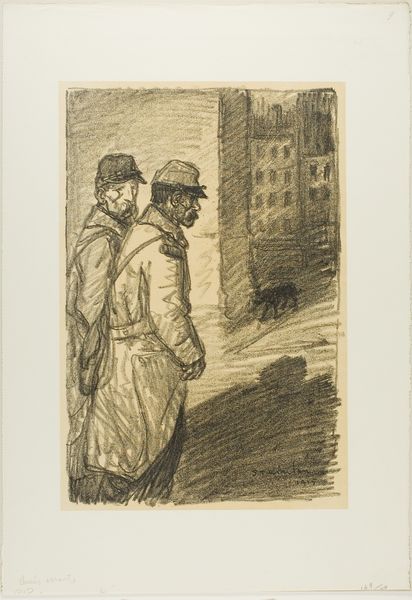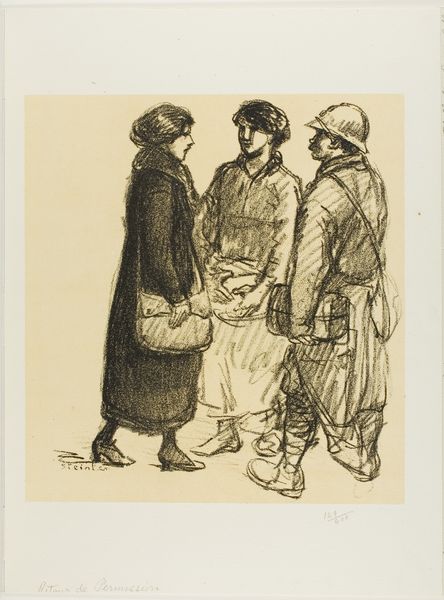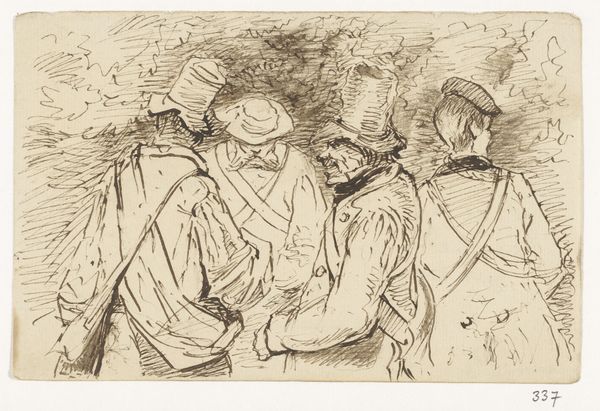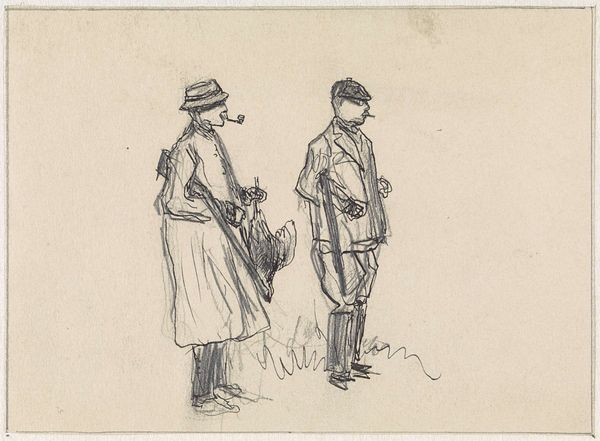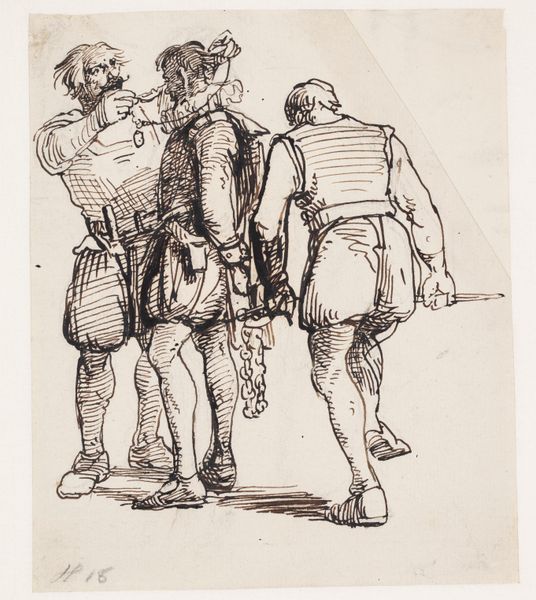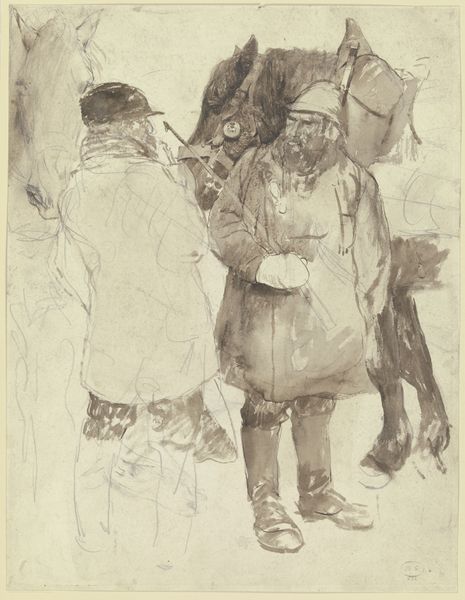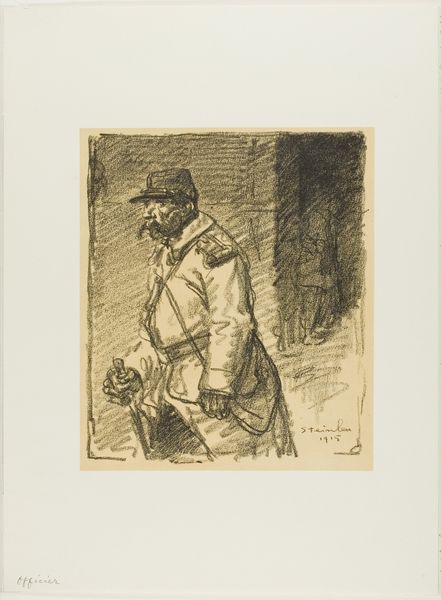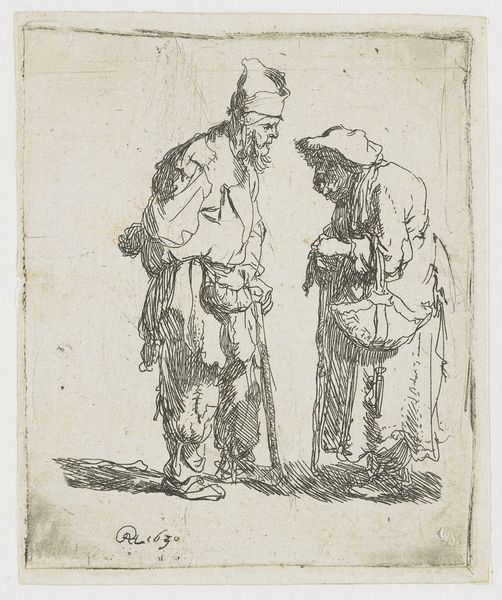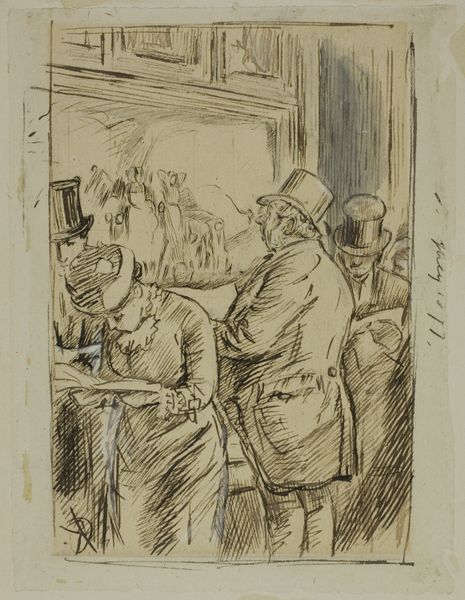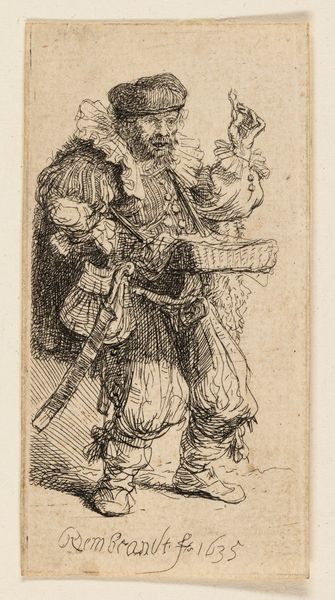
The Hour of Departure, plate twenty-six from Actualités c. 1916
0:00
0:00
drawing, lithograph, print, paper, pencil
#
drawing
#
ink drawing
#
narrative-art
#
lithograph
# print
#
figuration
#
paper
#
pencil
#
france
#
modernism
Dimensions: 503 × 340 mm (image); 570 × 385 mm (sheet)
Copyright: Public Domain
Editor: This is Théophile Alexandre Steinlen's lithograph "The Hour of Departure" from around 1916. It's currently at the Art Institute of Chicago. I'm immediately struck by how heavy the mood is, and the figures seem burdened not just by their packs but by something deeper. What stands out to you about this print? Curator: Given the date, we can understand this imagery as a powerful commentary on World War I. Consider the social context: Steinlen, a French artist, is creating this image in the midst of a brutal and protracted conflict. This print speaks to the pervasive atmosphere of loss and uncertainty. The heavy packs, their sturdy but worn boots, speak to the working class soldiers bearing the brunt of war. The title itself, "The Hour of Departure," carries significant weight. What do you think the artist is trying to convey about the 'departure'? Editor: I see what you mean, and I am inferring a permanent departure, but isn’t the scene too mundane for that reading? I mean, we are missing all drama of battle… Curator: Precisely. Steinlen doesn't depict the battlefield heroics or dramatic violence. Instead, he focuses on the quiet, almost resigned figures of the departing soldiers. In this way, Steinlen uses the every day to powerfully express the shared anxiety and loss of civilian and military population. Think of the artwork as a socio-political artifact that gains potency through empathy and direct observation. Editor: It is very poignant, framing it as a representation of ordinary citizens heading toward an uncertain future imposed upon them by sociopolitical factors. Thanks. Curator: And through understanding the print in the context of its time, we see how art serves as both a mirror and a critical voice within society.
Comments
No comments
Be the first to comment and join the conversation on the ultimate creative platform.
